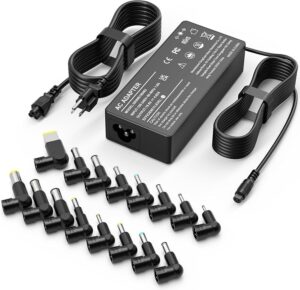Have you ever wondered how many watts are in a car battery? If you’ve been curious about the power capacity of your vehicle’s battery, you’re in the right place. Understanding the wattage of a car battery is essential for various reasons, from choosing the right battery for your vehicle to ensuring it can handle your electrical needs. In this article, we’ll delve into the world of car batteries and explore just how many watts they can deliver. Let’s dive in and unravel the mystery surrounding how many watts are in a car battery. So, let’s get started and find the answers you’ve been seeking!
How Many Watts Does a Car Battery Produce?
When it comes to understanding the power output of a car battery, it’s important to differentiate between voltage and wattage. Voltage refers to the electrical potential difference between two points, while wattage measures the rate at which electrical energy is consumed or produced. In simpler terms, voltage is like the force pushing the electricity, while wattage tells us the amount of work being done by that force.
In the case of a car battery, the voltage is fairly standardized. Most automotive batteries have a voltage of 12 volts, although some high-performance vehicles may utilize 24-volt systems. However, the wattage produced by a car battery can vary depending on several factors.
Understanding the Relationship Between Voltage and Wattage
Before diving into the factors that influence the wattage output of a car battery, let’s explore the relationship between voltage and wattage in more detail. Wattage is calculated by multiplying the voltage by the current flowing through a circuit. In the case of a car battery, the current is determined by the electrical load connected to the battery.
The wattage output of a car battery can be calculated using Ohm’s Law, which states that wattage (W) is equal to the product of voltage (V) and current (I). Mathematically, this can be expressed as:
Watts = Volts × Amps
For example, if a car battery has a voltage of 12 volts and is supplying a current of 10 amps to a device, the wattage produced would be:
Watts = 12 Volts × 10 Amps
Watts = 120 Watts
Therefore, in this scenario, the car battery would be producing 120 watts of power.
Factors Affecting Car Battery Wattage Output
The wattage output of a car battery can vary based on several factors, including:
1. Battery Capacity: The capacity of a car battery, measured in ampere-hours (Ah), indicates how much charge it can store. A higher capacity battery can typically produce more wattage output.
2. State of Charge: The state of charge (SOC) refers to the level of energy remaining in the battery. As the battery discharges, its voltage may decrease, which could affect the wattage output. It’s important to note that the car’s alternator continuously charges the battery while the engine is running, maintaining its SOC.
3. Load Connected: The type and number of electrical devices connected to the battery can impact its wattage output. Power-hungry devices like car stereos, headlights, and air conditioning systems draw more current, thereby increasing the wattage demand.
4. Battery Health: The overall health and condition of the battery can also play a role in its wattage output. A weak or deteriorated battery may struggle to deliver the necessary current, resulting in reduced wattage.
5. External Factors: Environmental conditions such as temperature and humidity can affect the performance of the battery. Extreme temperatures, both hot and cold, can influence the battery’s chemical reactions and its ability to deliver consistent wattage.
Measuring Car Battery Wattage Output
To measure the wattage output of a car battery, specialized equipment like an ammeter and a voltmeter is required. These tools allow you to measure the current flow and voltage across a specific load connected to the battery.
1. Start by disconnecting any loads or devices connected to the battery to obtain an accurate measurement.
2. Set the multimeter to the DC voltage mode and connect the voltmeter across the battery terminals. Record the voltage reading displayed on the meter.
3. Next, set the multimeter to the DC current mode and connect the ammeter in series with the load. Be sure to select the appropriate range on the ammeter to avoid damaging the equipment.
4. Activate the load, such as turning on the headlights or other electrical devices. Observe the ammeter reading, which represents the current flowing through the circuit.
5. Multiply the recorded voltage by the ammeter reading to calculate the wattage output of the car battery.
Tips for Maximizing Car Battery Wattage
To ensure your car battery delivers optimal wattage output, follow these tips:
1. Regular Maintenance: Keep your car battery in good condition by following the maintenance recommendations outlined in the vehicle’s owner manual. This includes checking the battery terminals for corrosion, cleaning them if necessary, and ensuring a secure connection.
2. Avoid Deep Discharging: Deeply discharging a car battery can reduce its overall capacity over time. Try to avoid running electrical devices when the engine is off, as this places a significant strain on the battery.
3. Limit Accessory Use: Minimize the use of power-hungry accessories like high-powered audio systems or aftermarket lighting. These devices can quickly drain the battery and decrease its wattage output.
4. Optimal Charging: Ensure your car’s alternator is in good working condition to provide the battery with proper charging. If you suspect an issue with the charging system, have it checked by a qualified mechanic.
5. Monitor Battery Health: Periodically check the battery’s health using a battery tester or diagnostic tool. This can help identify any potential issues before they become major problems.
In conclusion, while the voltage output of a car battery remains relatively constant, the wattage produced can vary based on factors such as battery capacity, state of charge, connected load, battery health, and external conditions. Understanding these factors and following proper maintenance practices will help ensure your car battery delivers optimal wattage output to power your vehicle’s electrical systems effectively.
Frequently Asked Questions
How many watts are there in a car battery?
A car battery does not directly measure power in watts. Instead, it is commonly rated in ampere-hours (Ah) or reserve capacity (RC). However, we can calculate the approximate wattage by multiplying the voltage of the battery by its current capacity.
What is the voltage of a typical car battery?
A standard car battery typically has a voltage of around 12 volts. This voltage provides the necessary electrical power to start the car’s engine and operate its various electrical components.
How do I calculate the wattage of a car battery?
To calculate the wattage of a car battery, you need to know its current capacity in ampere-hours (Ah) and its voltage. Multiply the current capacity by the voltage to get the wattage. For example, a 50Ah battery operating at 12 volts would have a wattage of 600 watts (50Ah × 12V = 600W).
Can I use a car battery to power household appliances?
While it is technically possible to use a car battery to power small household appliances, it is not recommended due to safety concerns and the limited capacity of car batteries. Car batteries are designed to provide short bursts of high power for starting engines, rather than continuous power for extended periods. It is advisable to use a dedicated power source, such as an inverter connected to a suitable battery or generator, for household appliances.
What affects the wattage output of a car battery?
The wattage output of a car battery depends on various factors, including its voltage, current capacity, and the efficiency of the electrical system it powers. Additionally, the condition and age of the battery can also affect its ability to deliver power effectively. Regular maintenance and ensuring proper charging can help maintain optimal battery performance.
Can I increase the wattage output of a car battery?
No, you cannot significantly increase the wattage output of a car battery beyond its specified rating. The wattage output is determined by the battery’s internal design and physical properties. If you require more power, you should consider using an auxiliary power source or upgrading to a higher-capacity battery with a higher voltage.
Final Thoughts
The power output of a car battery is measured in watts, which indicates the amount of energy it can provide per unit of time. The wattage of a car battery can vary depending on its capacity and voltage. Car batteries generally have a voltage of 12 volts, so to calculate the wattage, you would multiply the voltage by the ampere-hours (Ah) rating of the battery. For example, a 12-volt battery with a rating of 50Ah would have a capacity of 600 watt-hours (Wh). It’s important to consider the wattage of a car battery when determining its suitability for specific electrical devices or applications. So, the question of “how many watts in a car battery” is directly related to its capacity and voltage.


